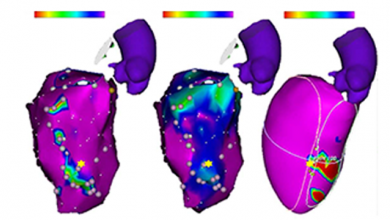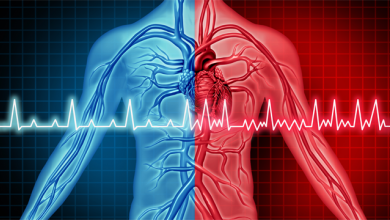Search results
Author(s):
Georg Nölker
,
Dieter Horstkotte
,
Klaus-Jürgen Gutleben
Added:
3 years ago
Catheter ablation is an established treatment option for patients with symptomatic atrial fibrillation (AF).1-3 Pulmonary vein (PV) angiography has been the initial imaging tool in AF ablation and is still used by up to 50 % of leading electrophysiologists.3 PV angiography still plays a major role in balloon-based ablation techniques routinely performed without electroanatomical mapping (EAM)…
View more
Hugh Calkins
Research Area(s) / Expertise:
Job title: Professor of Medicine and Director of Electrophysiology
Author
Author(s):
Sebastiaan RD Piers
,
Katja Zeppenfeld
Added:
3 years ago
Over the last 20 years ventricular tachycardia (VT) ablation has evolved from a treatment modality for selected patients withrecurrent haemodynamically tolerated VT (which can be mapped during ongoing arrhythmia), to a therapeutic option for patients with tolerated and untolerated VT using substrate-based ablation strategies.1 The substrate for VT after myocardial infarction (MI) consists of…
View more
Katja Zeppenfeld
Research Area(s) / Expertise:
Author
Expertise
Author(s):
Ling Kuo
,
Jackson J Liang
,
Saman Nazarian
,
et al
Added:
3 years ago
Catheter ablation has been increasingly used as a treatment for refractory ventricular tachycardia (VT) in patients with non-ischaemic cardiomyopathy (NICM). However, ablation outcomes tend to be quite variable because of the heterogeneity of the aetiology for the NICM and associated VT substrate in these patients.1–3 Patients with NICM can be sub-classified based on specific genotypic and…
View more
Author(s):
Irina Suman-Horduna
,
Sonya Babu-Narayan
,
Sabine Ernst
Added:
3 years ago
Catheter ablation has moved from ablation of ‘simple’ substrates like accessory pathways,1 atrioventricular nodal re-entrant tachycardias (AVNRTs)2 and re-entrant or focal tachycardia (of either ventricular or atrial origin)3–5 in recent years to more complex arrhythmias such as atrial or ventricular tachycardia (VT) or fibrillation.6–8 Even patients with complex congenital heart disease that may…
View more
Author(s):
Emmanuel Koutalas
,
Borislav Dinov
,
Sergio Richter
,
et al
Added:
3 years ago
Since the introduction of electroanatomical mapping (EAM) into clinical practice in 1997, remarkable progress has been made in catheter infrastructure, signal recording and processing, catheter guidance and visualisation and simultaneous real-time depiction and processing of different types of critical information during an ablation procedure.1 The latter, along with the comprehension of the…
View more
Author(s):
Tom JR De Potter
,
Gazmend Bardhaj
,
Aniello Viggiano
,
et al
Added:
3 years ago
Percutaneous catheter treatment for atrial fibrillation (AF) has seen an exponential uptake since the first cases were published exactly two decades ago.1 Evolving over different approaches and treatment strategies, current standard of care consists of pulmonary vein isolation (PVI) through radiofrequency (RF) or other energy sources. While this treatment has been shown to be superior to…
View more
Author(s):
Fehmi Keçe
,
Katja Zeppenfeld
,
Serge A Trines
Added:
3 years ago
Catheter ablation is an effective strategy to maintain sinus rhythm in patients with symptomatic atrial fibrillation (AF), which has evolved from a highly specialised technique to a first-line therapy.1–3 The cornerstone of ablation is pulmonary vein isolation (PVI).4 Over the last decade, ablation devices have undergone technical improvements, aiming for better lesion durability and ablation…
View more
Author(s):
Venkatesh Ravi
,
Jeffrey Winterfield
,
Jackson J Liang
,
et al
Added:
1 year ago













